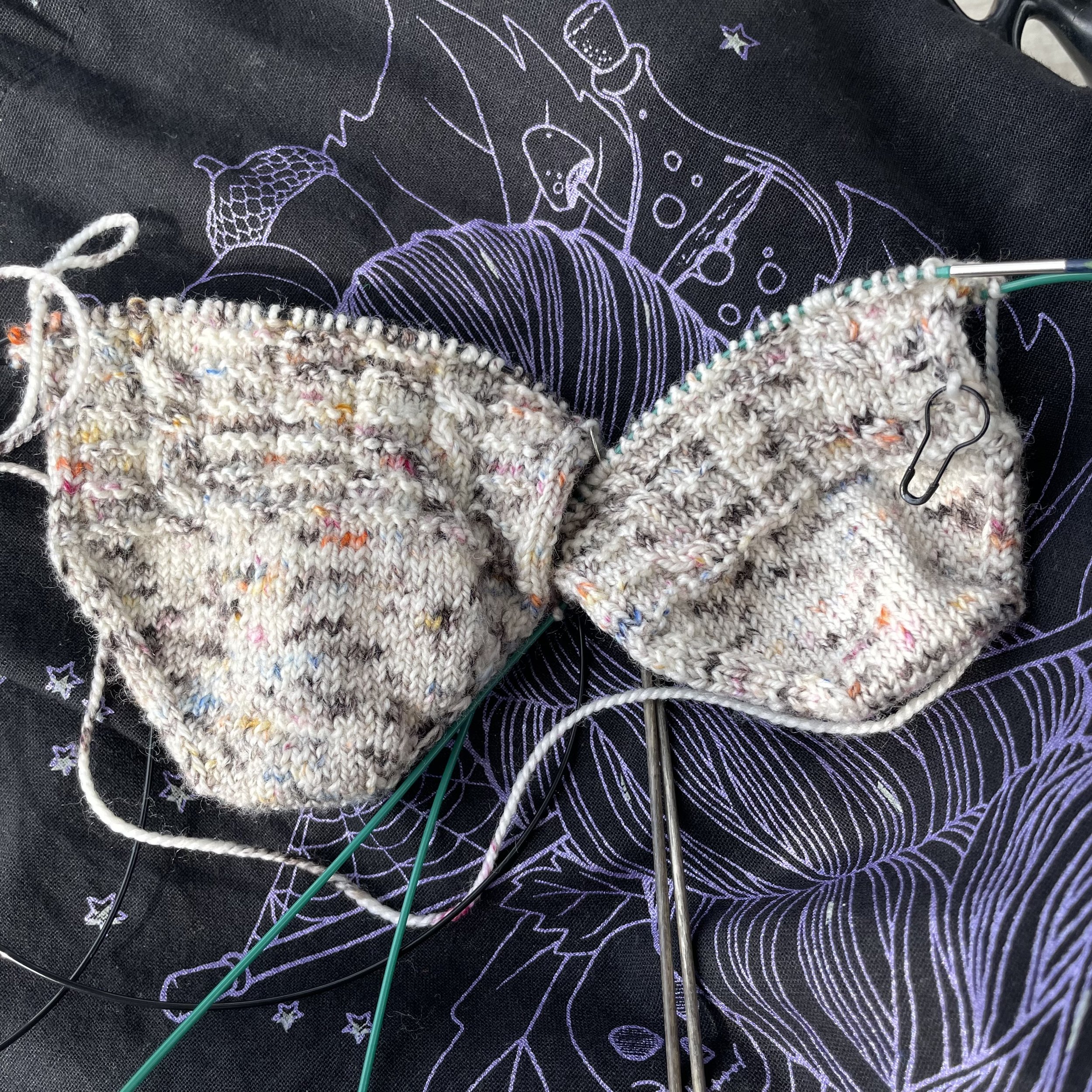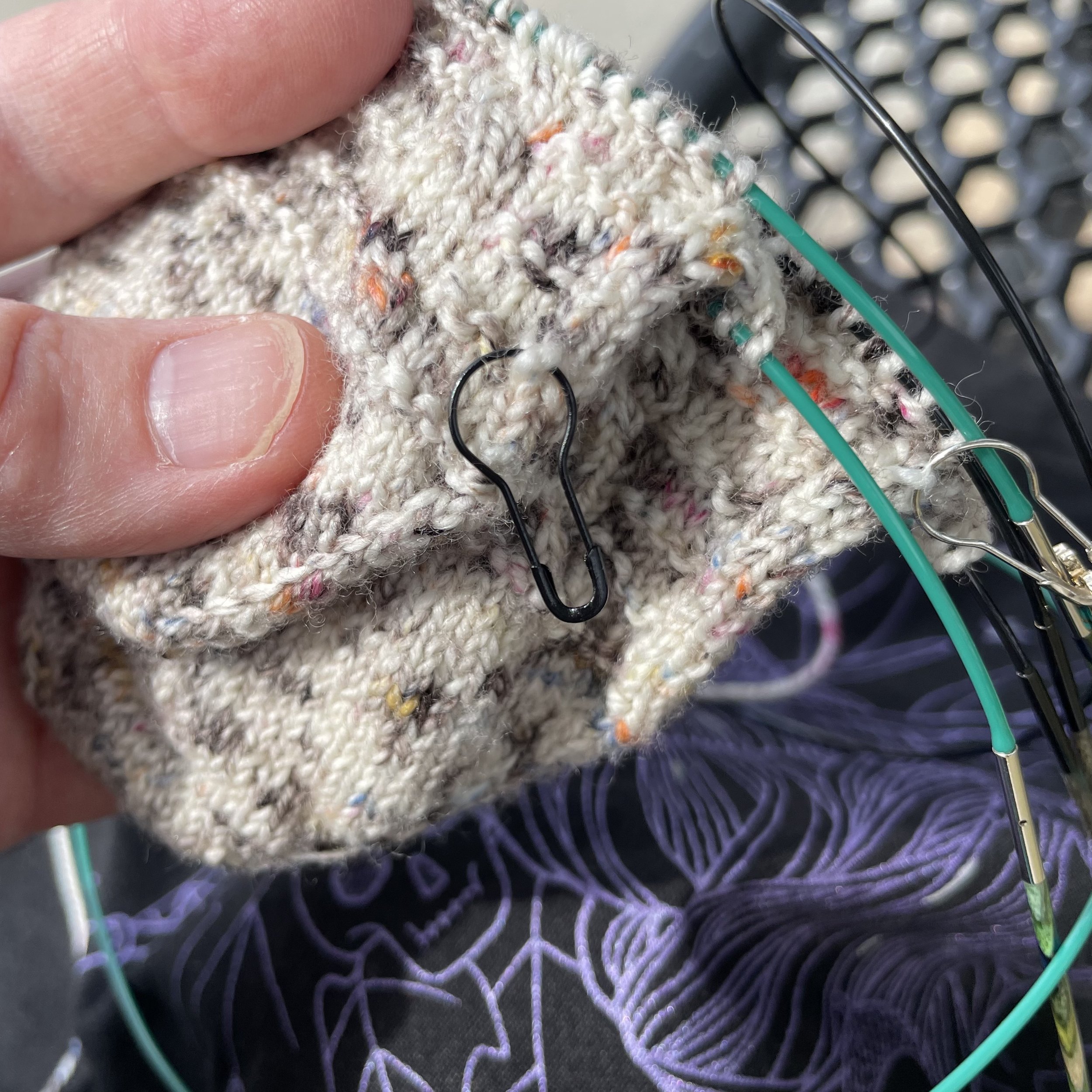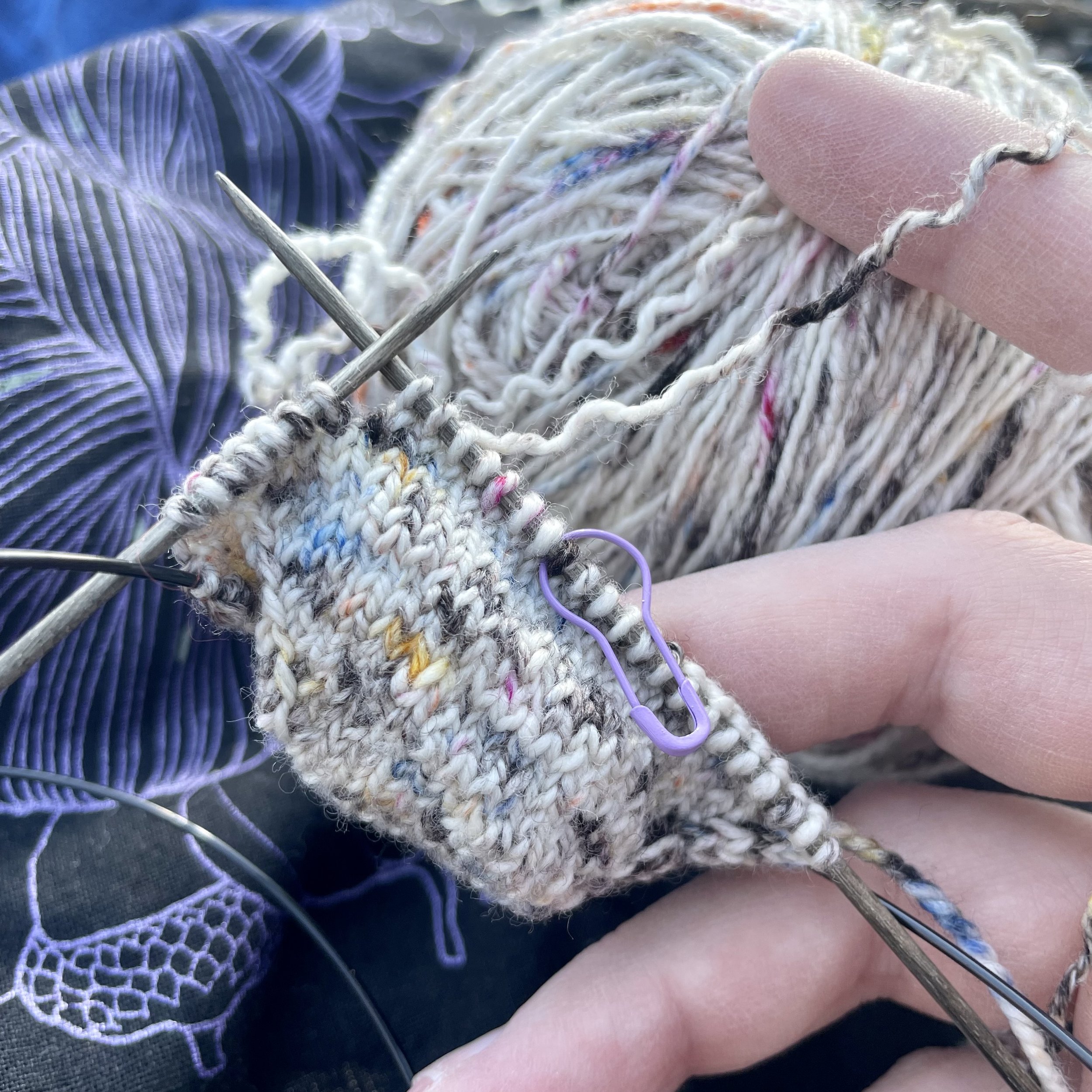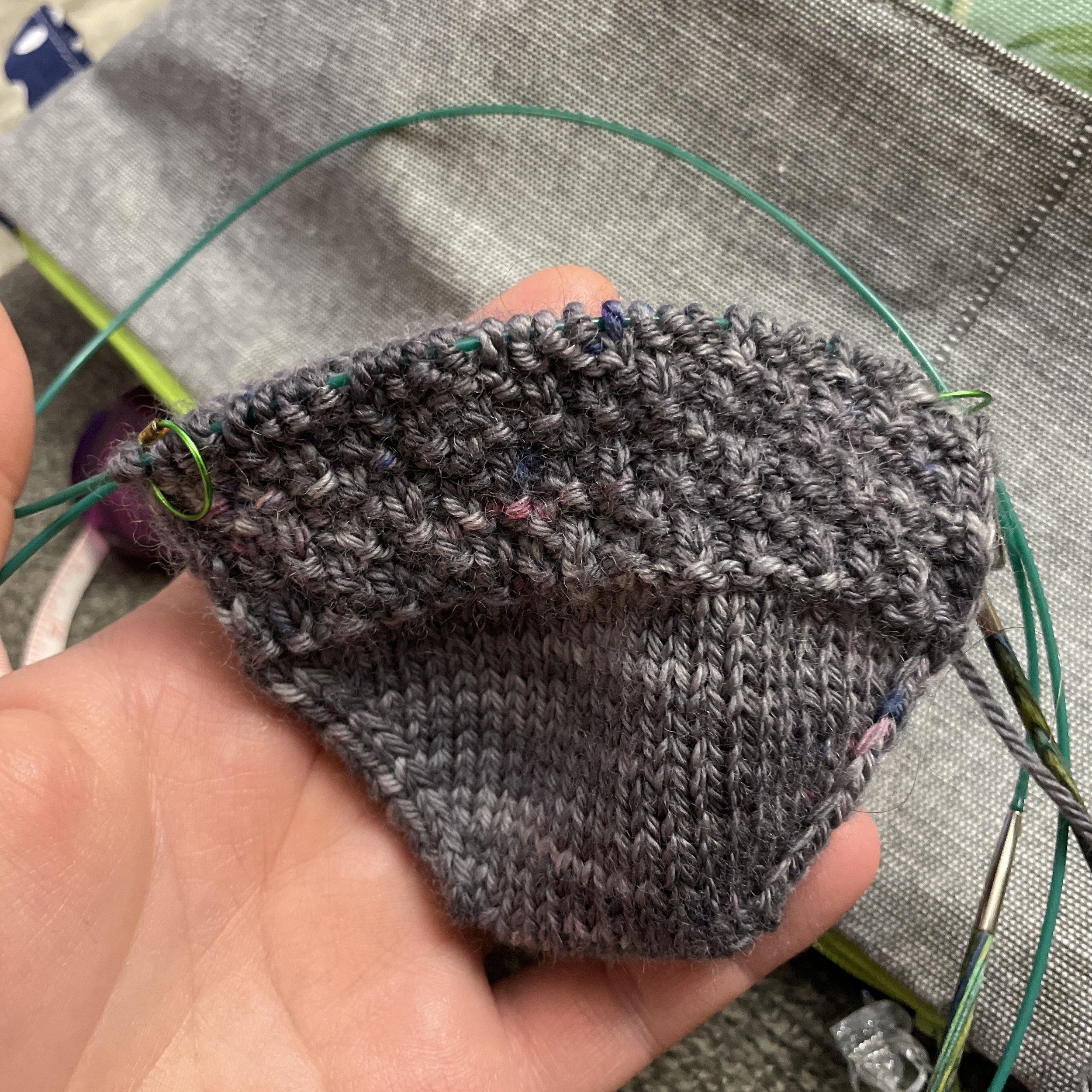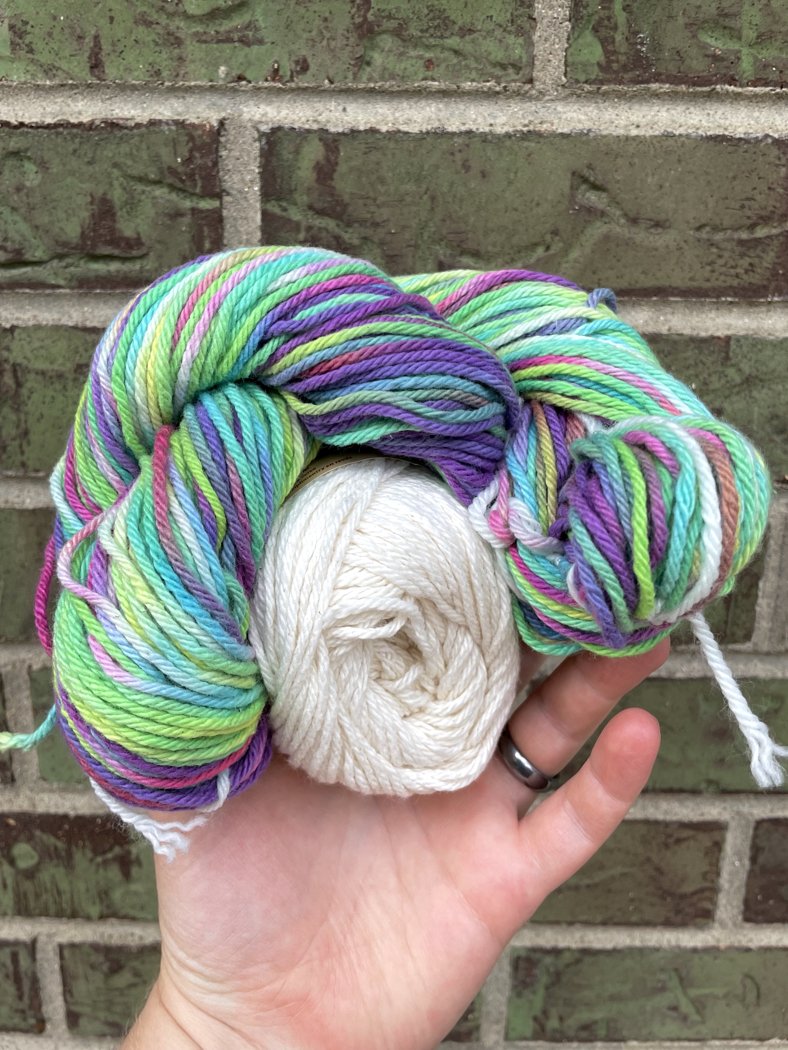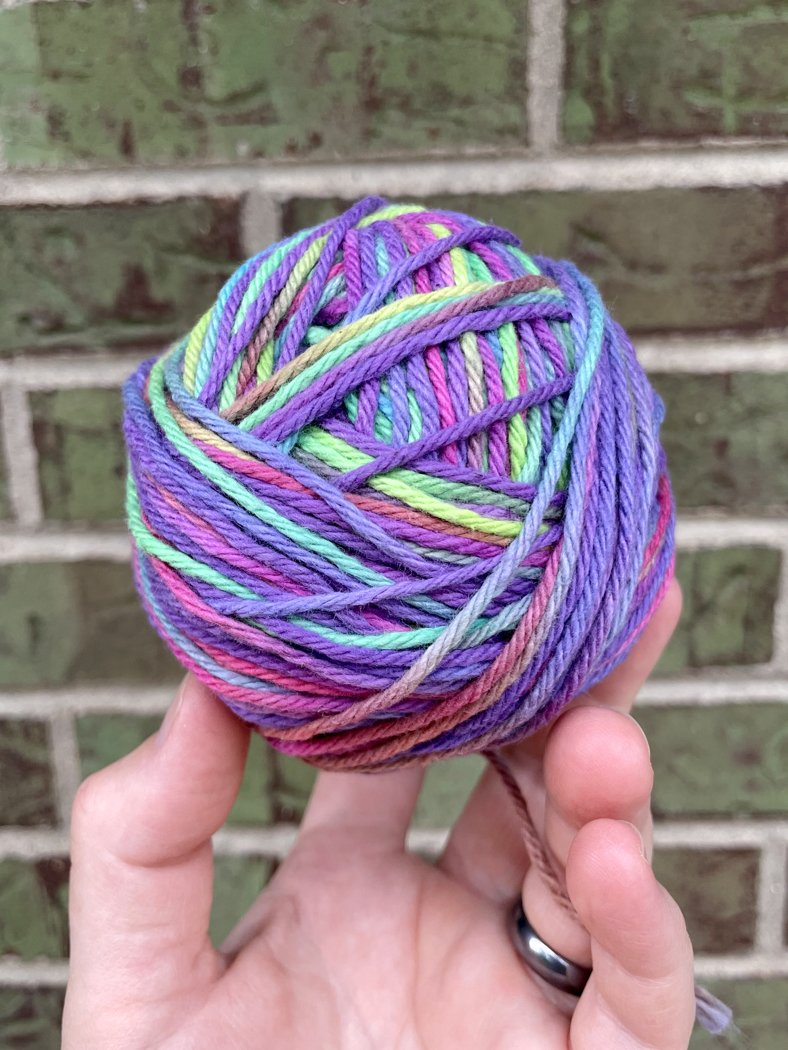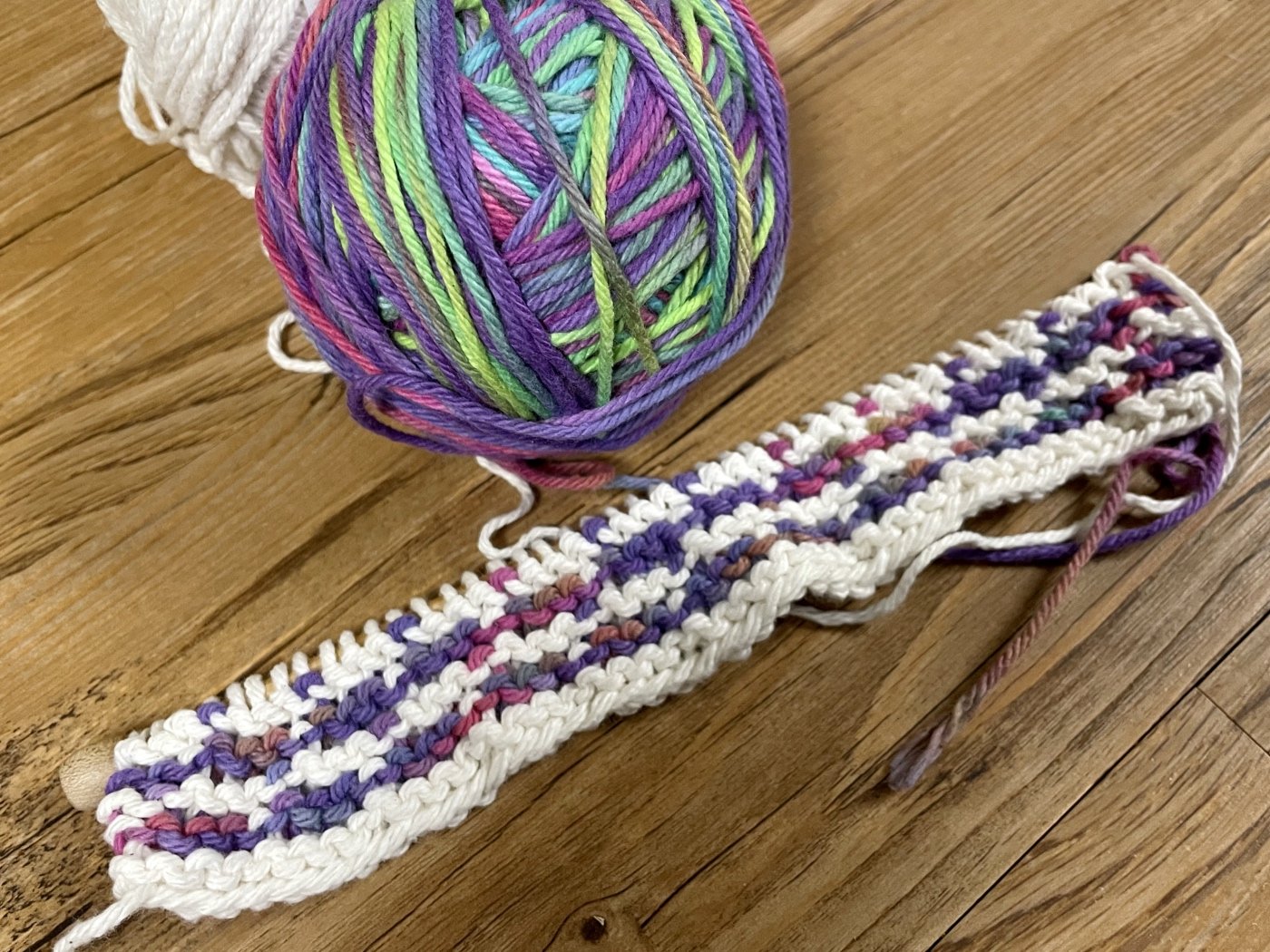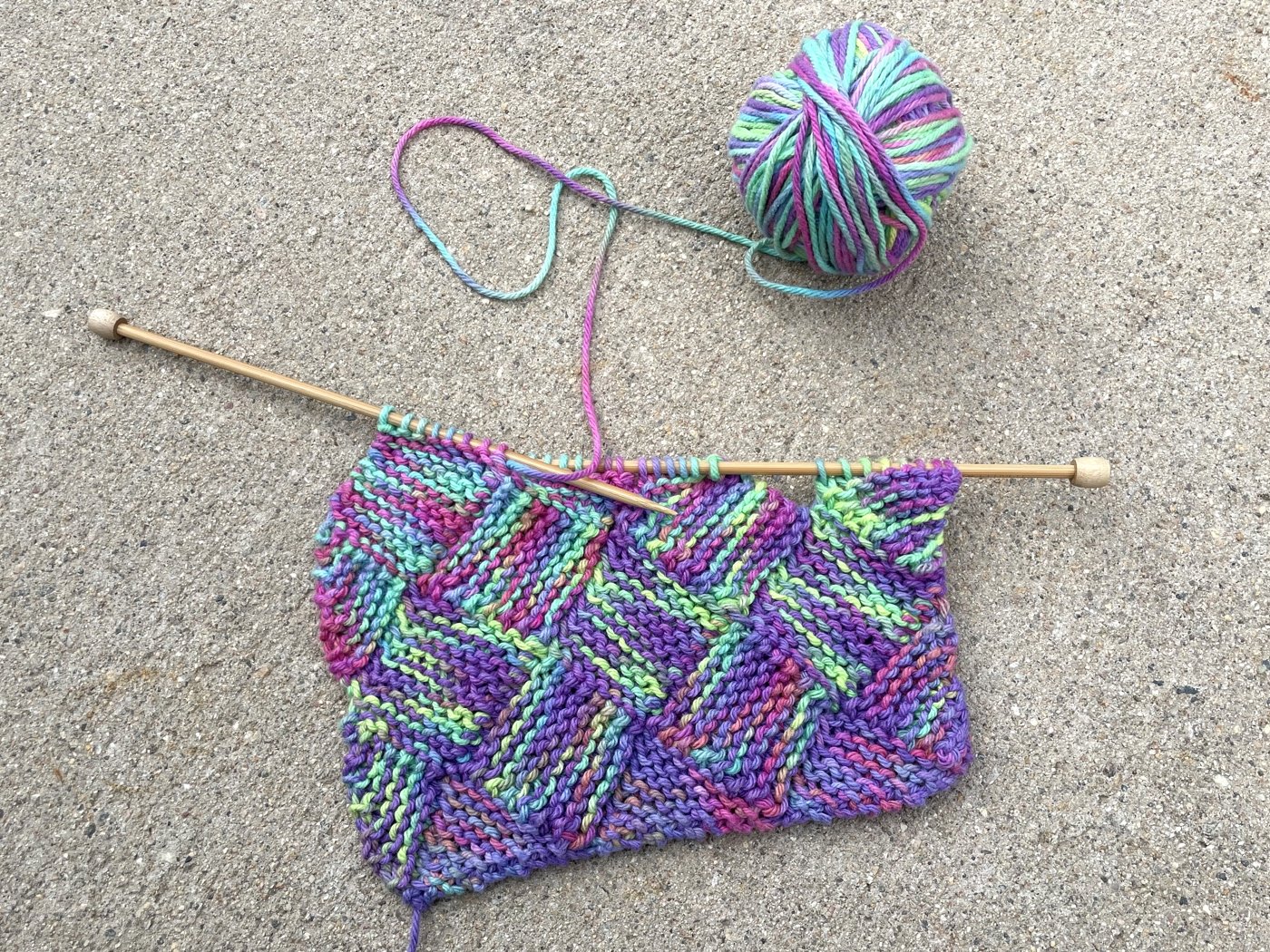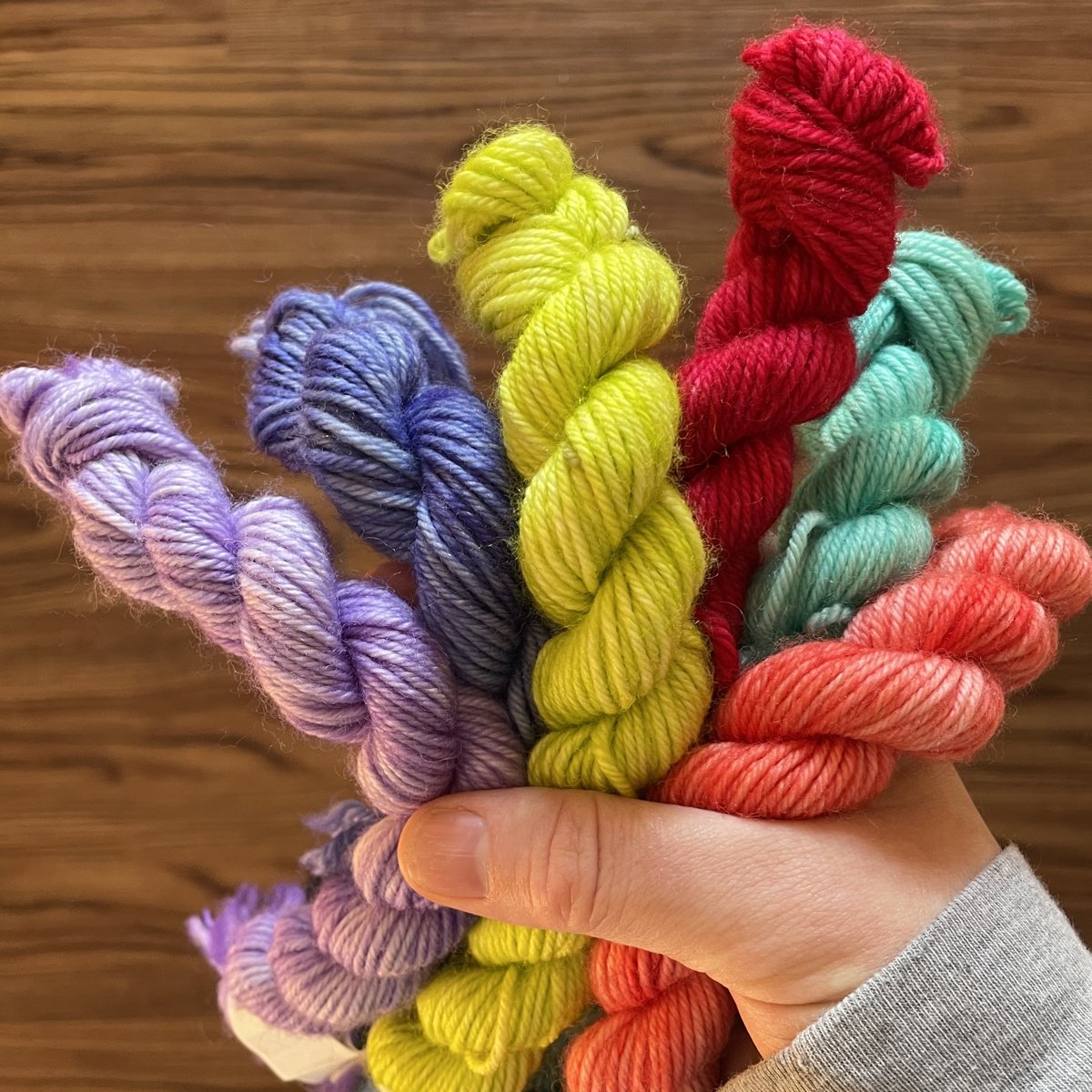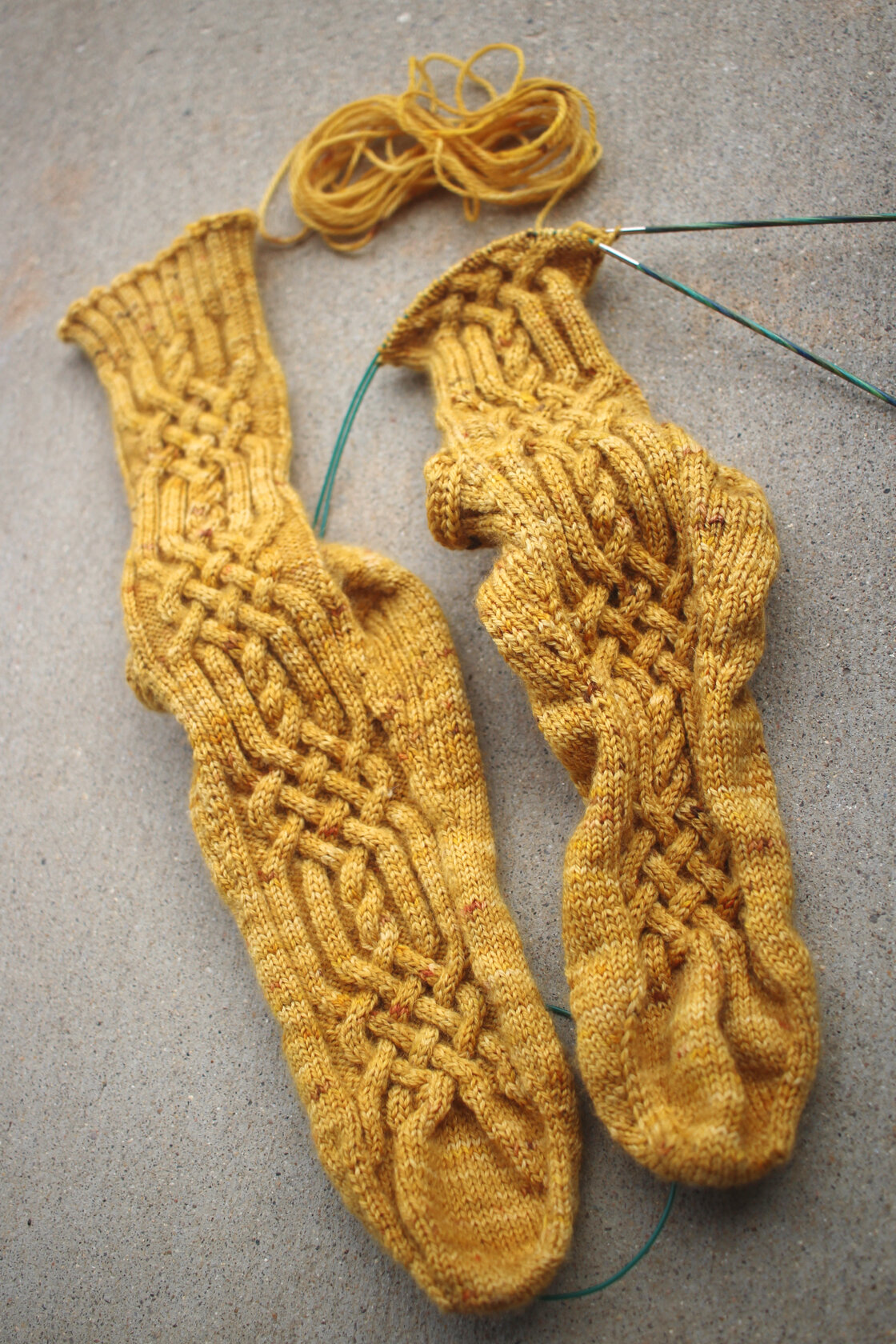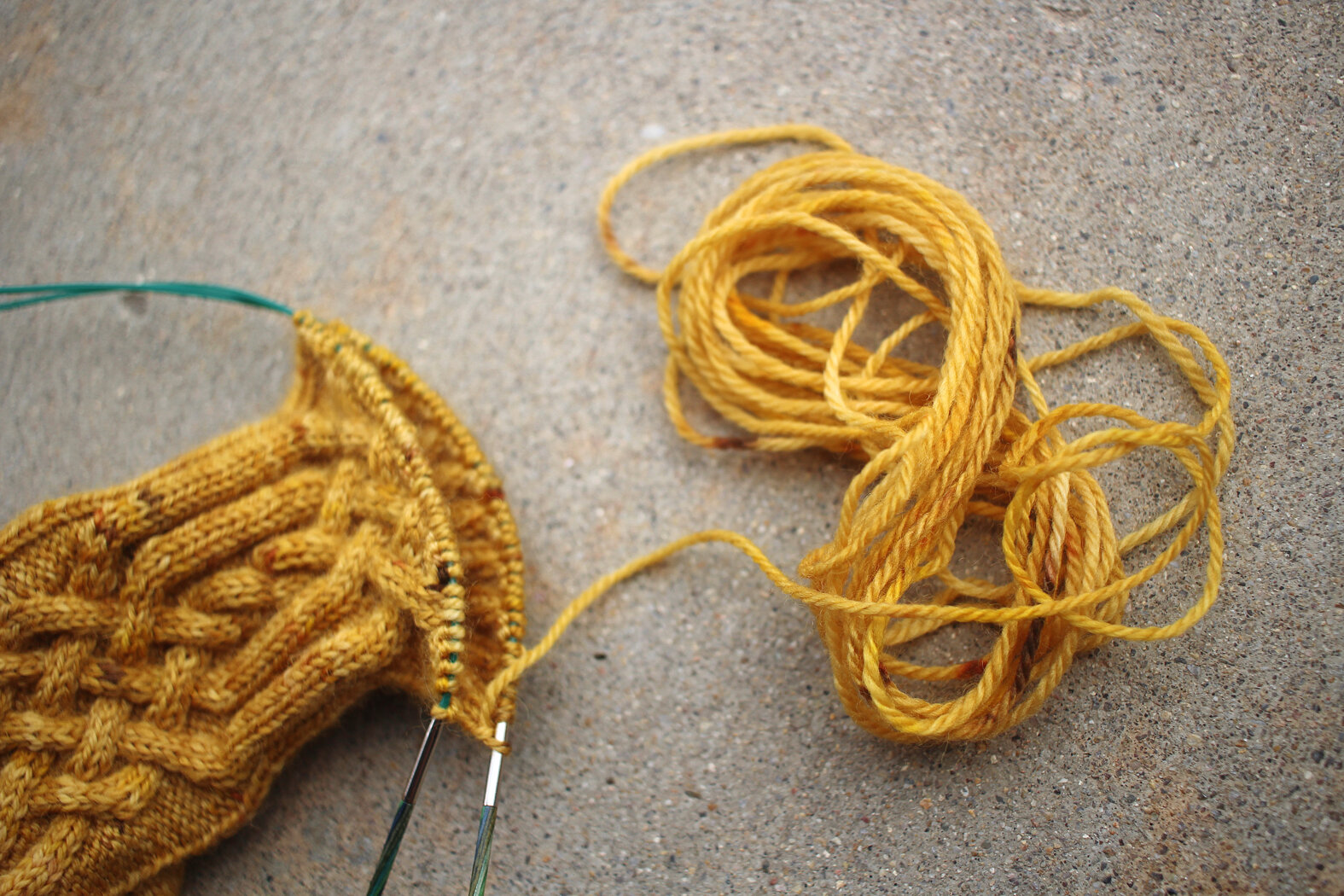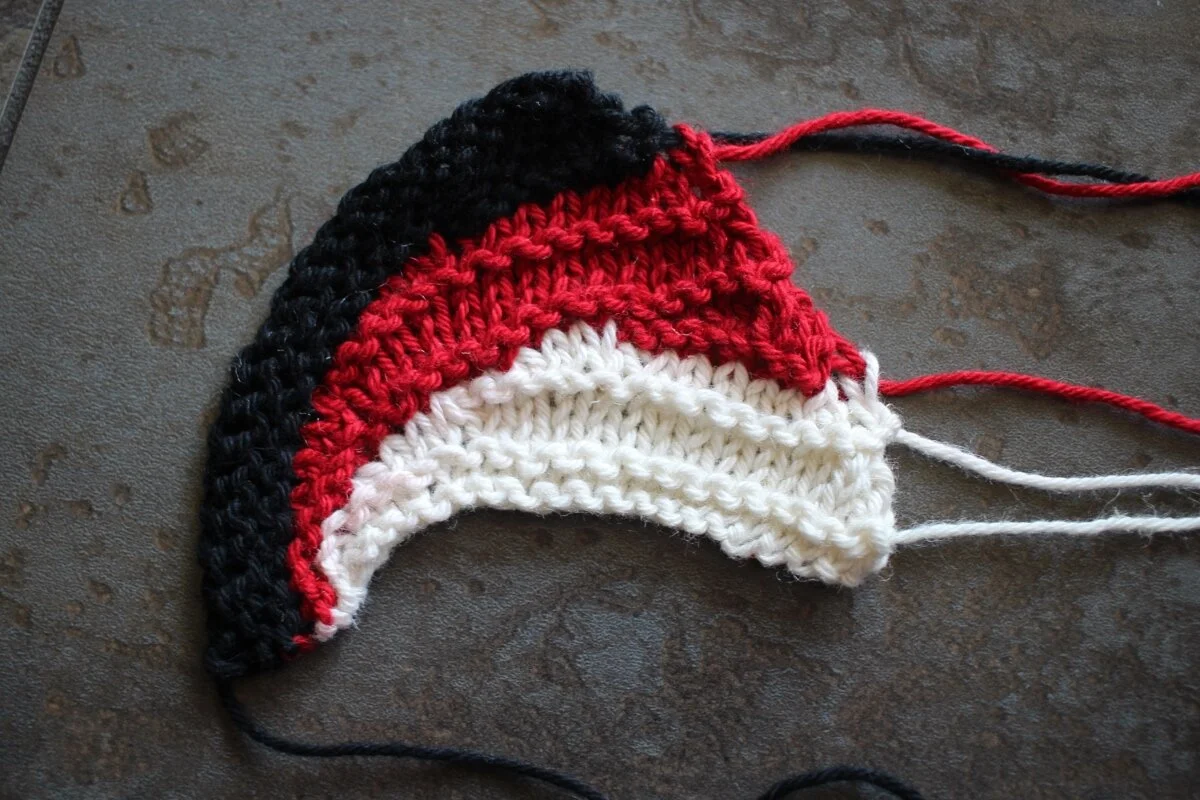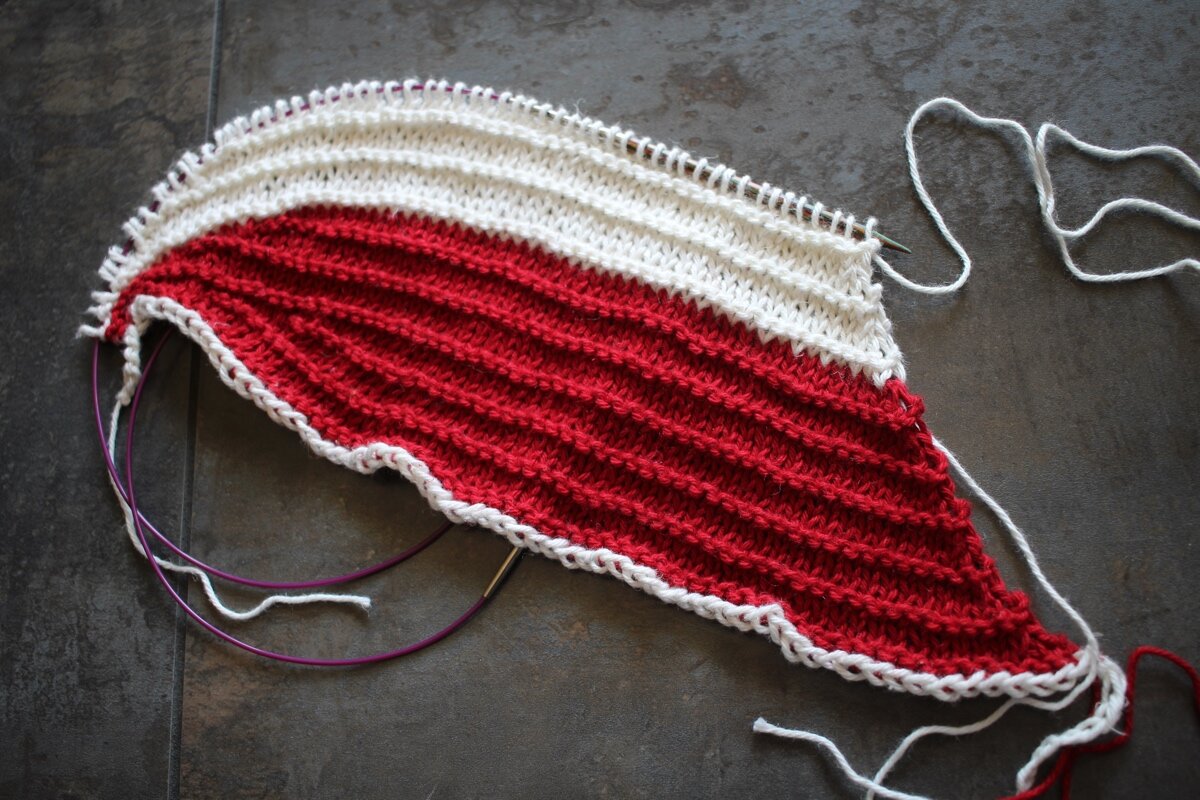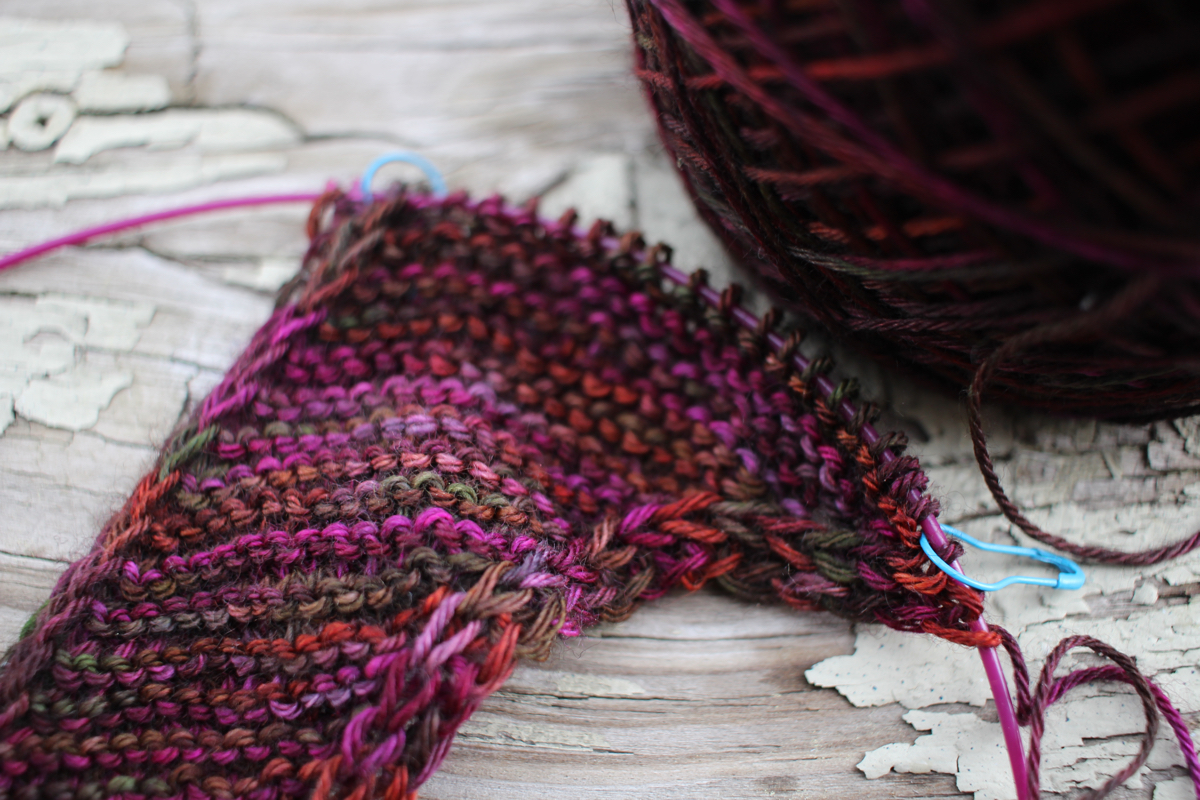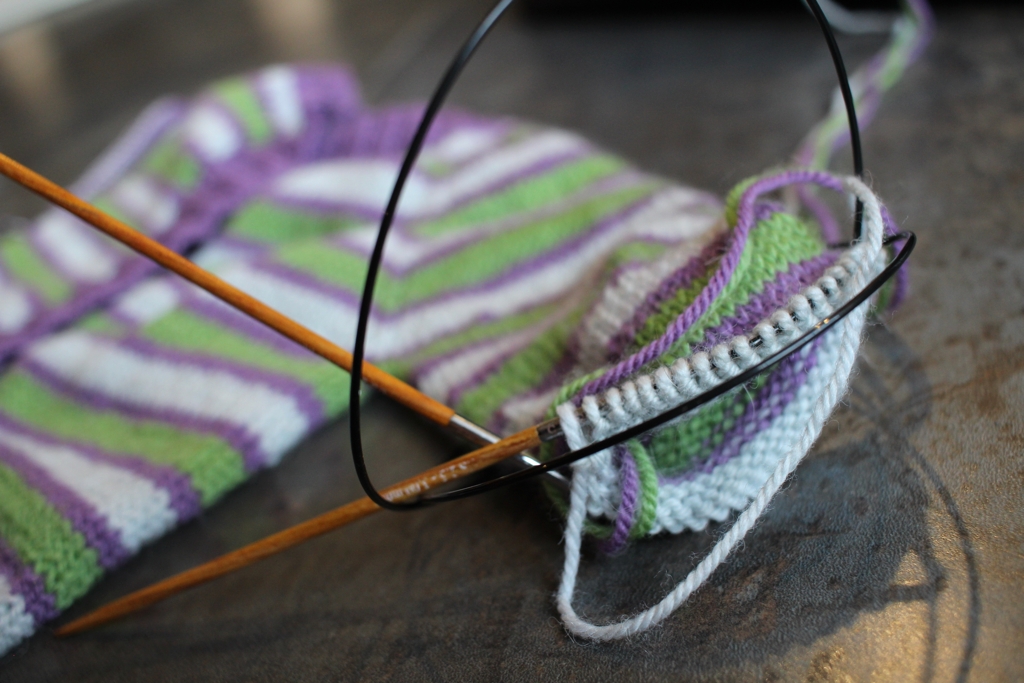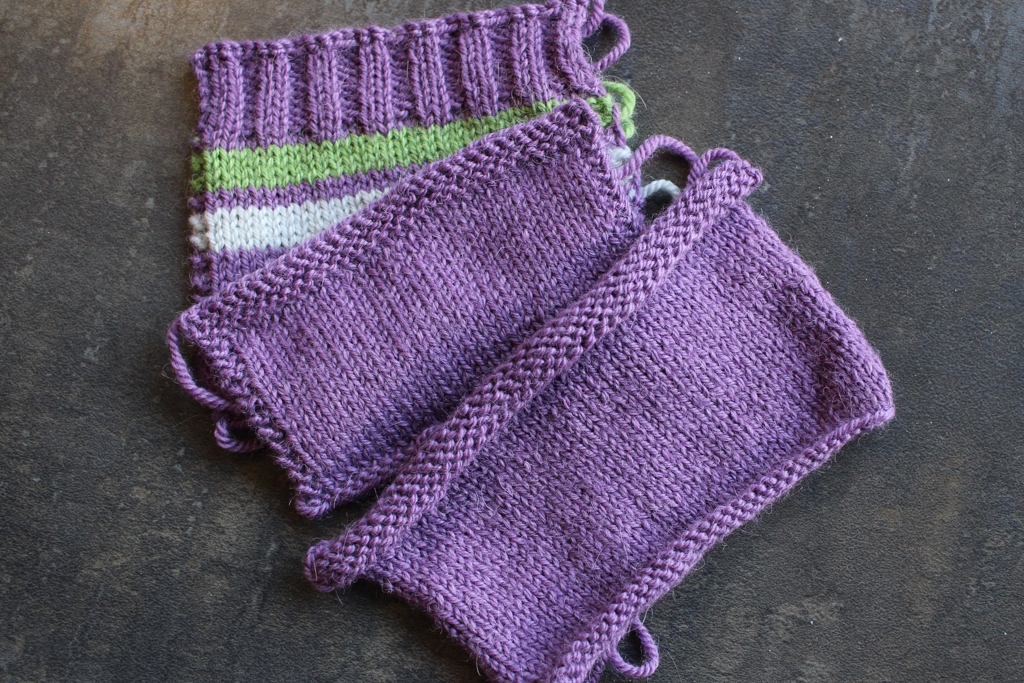Socks Take Two
/Maybe I should take a break from knitting socks for a bit. This is my second attempt at knitting what I’m calling my Low-Key Halloween Socks. I frogged my first try because my gauge was wildly different from the pattern I wanted to use. This time, I modded the Smokestack Socks to fit my larger stitch count and denser gauge. Seemed to be working well until I noticed my gauge relaxed by a whole stitch per inch. Instead of starting over again, I cast on for the second sock with the smaller stitch count to see if my gauge kept the relaxed 8 sts/in or the denser 9 sts/in. A toe and one repeat in, still 9 sts/in on sock number two and .75” of difference in width. Ugh.
Should I rip the first sock back to the toe or to where it matches a gauge of 9 sts/in? Should I rip the second sock back to the toe and increase until it’s the same stitch count as the first sock? Should I rip it all, put the yarn in time out, and knit Andrea Mowry’s new DRK Everyday Cowl instead? Decisions, decisions.

